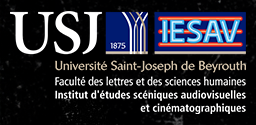Regards
Keywords
Symbol, Icon, Representation, Martyrdom
Document Type
Article
Abstract
During the turbulent period following the assassination of Prime Minister Rafik Hariri in Lebanon, political posters were an important medium used by rival political parties to impose specific imagery on the public, contributing to set up a partisan discourse linked to the political position of each one. A war of images and slogans then took place, based on an audacious revaluation of the notion of image, reconsidered as both a symbol and an icon. The classical figurative representation system inherited from the Renaissance was confronted with ideological considerations that created a rupture and proposed original models of images.
Résumé
Durant la période mouvementée qui a suivi l’assassinat du premier ministre Rafic Hariri au Liban, les affiches politiques ont été un moyen primordial utilisé par les partis politiques rivaux pour imposer auprès du grand public une imagerie spécifique pouvant contribuer à enrichir un discours partisan, lié au positionnement de chacun. Une guerre d’images et de slogans se met alors en place, basée sur une revalorisation audacieuse de la notion d’image, revue tantôt comme symbole et tantôt comme icône. La représentation figurale classique héritée de la Renaissance se retrouve soumise à des considérations idéologiques qui vont créer une fracture et proposer des modèles d’images originales.
Recommended Citation
Yazbek, Elie
(2020)
"Le pouvoir en images : les affiches politiques au Liban entre 2005 et 2010,"
Regards: Vol. 23:
No.
23, Article 9.
Available at:
https://e-journals.usj.edu.lb/regards/vol23/iss23/9
Included in
Comparative Literature Commons, Creative Writing Commons, Film and Media Studies Commons, Fine Arts Commons, Theatre and Performance Studies Commons


